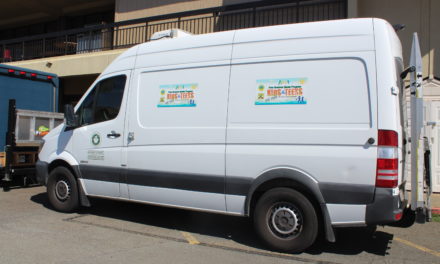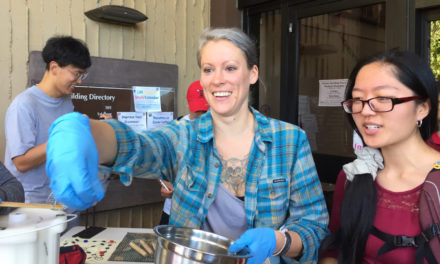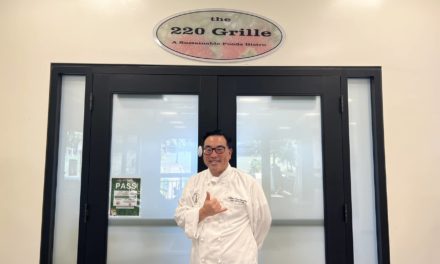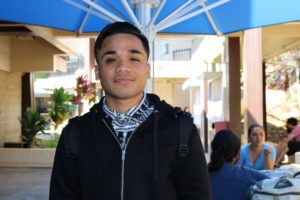By Nakoa Nunies | Staff Writer
Originally the KCC Rain Garden started out as a design for an ecology competition in 2013, but through hard work and dedication, a small team was able to turn this dream into a reality. Located on the front lawn side next to ʻIlima building, the rain garden is almost hidden to the eyes of the public.
A rain garden is a big hole in the ground that uses rainwater runoff to water the plants in the garden. The runoff is filled with pollution from everyday activities, like driving a car. The grass and plants in the garden filter out the pollution so they don’t end up in the drainage system.
Water that ends up in the drainage system goes out to the ocean and changes the Ph balance of the ocean water in the area. This kills the coral reef in places where the drain water spills out. By filtering the water around it, the garden can help to reduce the amount of pollution that ends up in the ocean.
It took around two years of planning and was finally built in the summer of 2015. The hardest part of the project was coordinating between departments to get a spot to put the rain garden. The project was a collaboration between the Ecology and Engineering departments. In fact, it was one of the first on-campus projects to be approved by the school, according to Carin Jaber, a service-learning instructor who oversees the rain garden. The KCC Rain Garden was one of the greatest achievements for Jaber, one of the original members of the design team and advisor for the service learning.
“You can do this at home, it’s not that hard,” Jaber said.
You can get involved by volunteering at the KCC Rain Garden as a Service Learning Project, where you would help maintain the gardens grounds, plants, and rain catchment system. You will also learn about the plants in the garden along with its medicinal properties and uses. This type of service learning is the best fit for students taking classes related to botany, biology, or native Hawaiian studies.
For more information, you can click here to go to the service learning site or contact a service learning instructor at cjaber@hawaii.edu.
To read all of Nakoa’s stories, click here. Nakoa can be reached at nakoakn@hawaii.edu.






